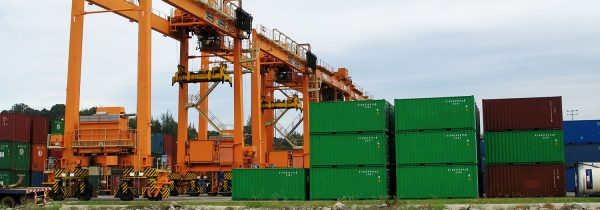On the 7th of February 2018, as part of the efforts of the Nigerian Ports Authority (NPA) to further decongest the traffic gridlock on Apapa port axis, the Managing director ―Hadiza Bala-Usman― flagged off the first export consignment of manganese, a solid mineral resource from the Ikorodu lighter terminal to Apapa port.
This initiative has since resulted in the movement of almost 2,000 truck equivalents of containers and other bulk cargo from Apapa port access road by leading FMCG trading and manufacturing companies moving goods comprising mainly of solid minerals and agro commodity exports. The operations at the terminal have been on the high.
The Nigerian Ports Authority (NPA) reports that in 2017, the estimated cargo throughput in Apapa and Tin-Can Island ports was 67 per cent of the overall country’s’ imports and exports. The Lagos ports being the preferred ports, have been faced with the problem of delay in cargo evacuation, which has led to port congestion and huge traffic queues.
Over time Several ‘cosmetic’ attempts have been made to clear the Apapa traffic but as soon as the media attention dies down, the gridlock creeps back. It is estimated that we lose about N20 billion daily due to the Apapa gridlock, which is the country’s premier port.
Embracing intermodal logistic solutions such as the barge services moving cargo to and from Apapa to NPA Ikorodu Lighter Terminal would significantly contribute to solving part of the chaotic traffic situation that is currently been experienced in Lagos State in the past couple of weeks and months.
Figures from the Nigeria Ports Authority (NPA) show that container traffic statistics at the country’s sea ports have tripled since 2007. Ordinarily this should be good news as it is an indication that the economy is expanding. However, in the case of Nigeria, this has become a challenge because the infrastructure to support this growth in cargo has actually deteriorated.
Internationally, Nigeria is no longer a desired shipping destination because of the longer turnaround time for ships coming to the country. A 2018 Overseas Cargo and Freight Costs template showing the cost of shipping cargo from The United States to other destinations published by moverdb.com shows that cargo and freight costs from the United States (New York) to Nigeria are about the highest globally. The cargo and freight costs of a 20 feet container from New York to Apapa Port is $4,982 almost twice the cost of the same 20 feet container to South Africa which will cost just US$2,542. For a 40 feet container, the cost is US$7,436, which is almost twice the cost to ship a similar container to South Africa.
Reports from the Department for Environment, Food and Rural Affairs (DEFRA) show that shipping emits less carbon than other transport modes and this has been demonstrated by one study after another.
Sea and Water’s report, The Case for Water, showed that increased water freight transportation can cut the amount of carbon put into the atmosphere by 80% and for each tonne-km, inland shipping emits only 22 grams of carbon. Rail freight is ranked a close second-best, at 28 grams.
In a recent development, the Head Marketer – Import of Connect Rail Services Limited (CRSL), Miss Cynthia Owoh stated that the movement of imports and exports, in and out of the port through inland waterways should be embraced by port users to improve their cargo delivery throughput and reduce the number of trucks plying the port access road which would invariably reduce traffic and cost of road repairs by the Federal Government.
“It’s about time we embrace other channels that would work for both social and economic growth”, she added.



